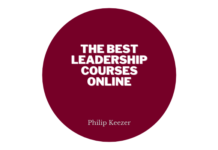Recently I came a statistic that highlights a significant deficit within our economy and business ecosystem. It’s not a financial deficit, but will no doubt have implications for the bottom line. According to research explored by PMI, only 4-7% of leaders are considered to have strategic thinking skills.
That sounds like a really low number.
Especially when you consider what strategy is. Being able to formulate a plan that provides long-term value is crucial for leaders, regardless of the industry they’re in.
So what is strategic thinking and what impact does it have on business operations? And how can a leader improve their strategic thinking?
How to think strategically?
Strategic thinking is the application of mental processes to the achieving of specific goals. A more formal definition, applied to the business world, goes like this:
“Strategic thinking focuses on finding and developing unique opportunities to create value by enabling a provocative and creative dialogue among people who can affect a company’s direction. Strategic thinking is a way of understanding the fundamental drivers of a business and rigorously challenging conventional thinking about them, in conversation with others”
That sounds a bit complicated, so let’s break it down. At its core, strategic thinking is about understanding a decision’s potential outcomes before taking it. It’s also about the ability to come up with innovative ideas for the range of decisions available at a given time.
It’s also something based on a good understanding of business in general, as well as the particular business a leader is responsible for.
For example, let’s imagine the lead software developer for a fintech startup. Their product has improved in acquisition over the past quarter, but customers complain about UX consistently. Strategic thinking will be part of the decision-process to improve on the software.
The lead software developer can:
- Draw upon experience in the health tech industry to figure out better front-end layouts.
- Project how changes will improve user experience.
- Estimate development time for any proposed changes.
And all of these things are done/improved thanks to strategic thinking.
What Are The Benefits Of Strategic Thinking?
Business success requires numerous qualities including overall good leadership, external investments, and the hiring process just to name a few. Without strategic thinking however, none of these elements will come together as well as it might otherwise.
But it’s easy to attribute clear benefits to strategic thinking:
- Sustainable long-term development. Strategic thinking helps leaders make decisions that are fruitful in the long-term.
- Adaptability. Even when the decision-making process fails in the beginning, strategic thinking helps leaders adapt to new information.
- Avoiding risks. A leader with strong strategic thinking can figure out risks in advance, as long as they have enough data at their disposal. This skill won’t remove risk, but it can help mitigate it in certain scenarios.
- Business growth. Ultimately, strategic thinking is about adding long-term value to a company. So business growth is a clear benefit from that.
So it’s obvious that strategic thinking is valuable. So why don’t more leaders (and the business they’re responsible for) employ it?
The Strategic Thinking Manifesto found 10 reasons for companies not employing enough strategic thinking. Reasons range from the practical such as not having time or not having the right information, to more systemic and cultural reasons such as attachment to the status quo and a lack of training or knowledge of what strategic thinking even is.
For further reading on why strategic thinking is absent from a lot of companies, I recommend reading through the entire Strategic Thinking Manifesto.
So, what kind of steps can leaders take, to unlock their own strategic thinking?
Mindfulness Is Key
Going on auto-pilot is a very real thing for professionals of all ages, or positions. Whether we’re talking about a junior developer taking his first steps in the business world, or an experienced Marketing VP for a Fortune 500 company, the risk of not being mindful is a possibility.
No matter the task, it can always be completed with headphones in the ear and the mind roaming anywhere else but in the moment.
A good practice for mindfulness is the balcony exercise. It’s pretty easy. Once in a while, when at work, take a break, head out to the balcony and assess what you’re working on, and how it can be improved.
This type of exercise helps with strategic thinking, because it forces people to be mindful.
Any other mindfulness exercise will help as well. Things like meditation, physical workout, or making time for hobbies are all important to improve mindfulness.
Reflection And Analysis
The balcony exercise can be extrapolated to actual business practices. Strategic thinkers will always ask the right questions to gauge their company’s performance, and its direction. Whether in a meeting, or on their own, strategic thinkers focus on introspection, reflection, and analysis of the company’s direction.
Things like:
“Where is our product headed?”
“What needs can we answer with this specific strategy?”
“What is our prepared response to a new competitor entering the market?”
Are (general) examples of questions that incentivize reflection and analysis. In turn, they help key decision-makers formulate a strategy for approaching challenges and opportunities.
Analytical skills are also extremely important. The answer to those questions has to come from hard-data, not semi-informed guesses.
Formulating A Reliable Plan
Strategic thinking is defined by the ability to formulate reliable long-term plans. A good exercise to practice strategic thinking is to actually sit down and plan for the future. Whether that’s an overall revamp of the business plan, or a better plan for one specific department.
Either option really helps leaders understand their business, shape a better future for it, and practice strategy skills.
Communicating Clearly
Strategic thinking doesn’t mean anything without input and output of information. To formulate reliable plans, leaders need to gather information. And that doesn’t just come from statistics. Listening to one’s team, and one’s customers is crucial for developing strategic thinking, and for enabling it.
Moreover, good strategic thinking skills aren’t valuable without making one’s thinking visible. Good leaders need to be able to communicate their plans, and the merits of their plans, if they expect anyone to follow.














